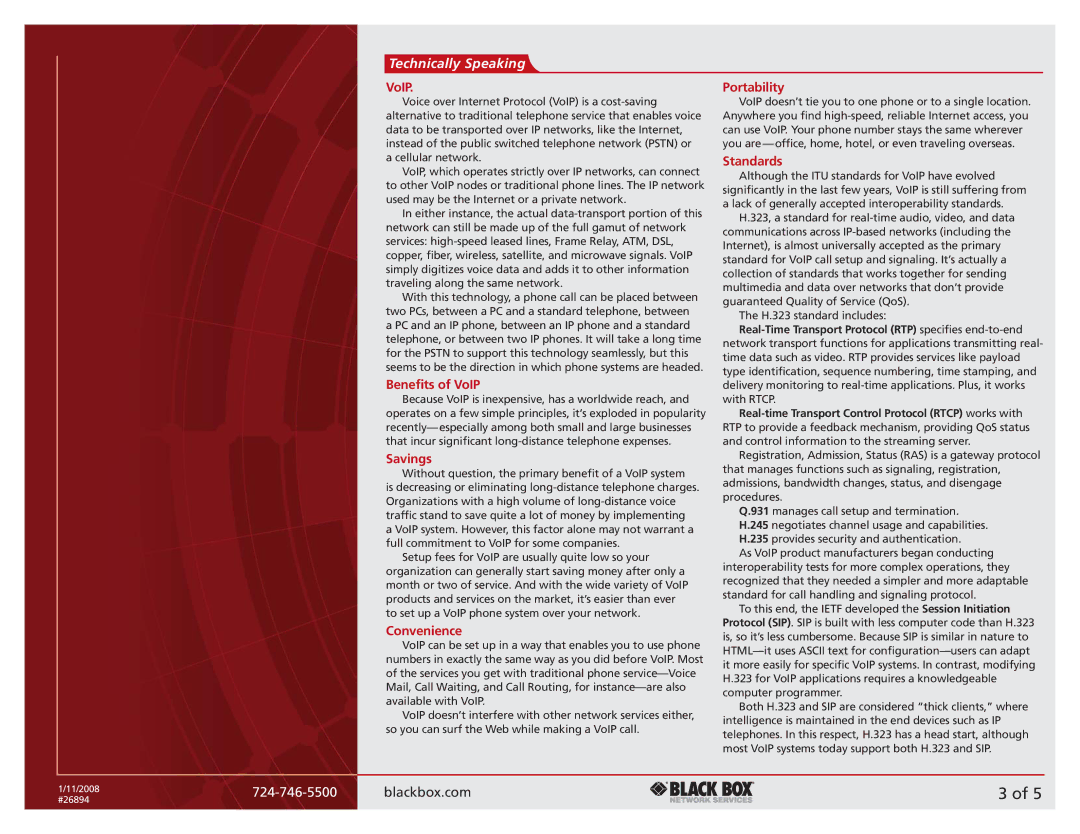
Technically Speaking
VoIP. | Portability |
Voice over Internet Protocol (VoIP) is a
VoIP, which operates strictly over IP networks, can connect to other VoIP nodes or traditional phone lines. The IP network used may be the Internet or a private network.
In either instance, the actual
With this technology, a phone call can be placed between two PCs, between a PC and a standard telephone, between a PC and an IP phone, between an IP phone and a standard telephone, or between two IP phones. It will take a long time for the PSTN to support this technology seamlessly, but this seems to be the direction in which phone systems are headed.
Benefits of VoIP
Because VoIP is inexpensive, has a worldwide reach, and
operates on a few simple principles, it’s exploded in popularity
Savings
Without question, the primary benefit of a VoIP system is decreasing or eliminating
Setup fees for VoIP are usually quite low so your organization can generally start saving money after only a month or two of service. And with the wide variety of VoIP products and services on the market, it’s easier than ever to set up a VoIP phone system over your network.
Convenience
VoIP can be set up in a way that enables you to use phone numbers in exactly the same way as you did before VoIP. Most of the services you get with traditional phone
VoIP doesn’t interfere with other network services either, so you can surf the Web while making a VoIP call.
VoIP doesn’t tie you to one phone or to a single location. Anywhere you find
Standards
Although the ITU standards for VoIP have evolved significantly in the last few years, VoIP is still suffering from a lack of generally accepted interoperability standards.
H.323, a standard for
The H.323 standard includes:
Registration, Admission, Status (RAS) is a gateway protocol that manages functions such as signaling, registration, admissions, bandwidth changes, status, and disengage procedures.
Q.931 manages call setup and termination.
H.245 negotiates channel usage and capabilities.
H.235 provides security and authentication.
As VoIP product manufacturers began conducting interoperability tests for more complex operations, they recognized that they needed a simpler and more adaptable standard for call handling and signaling protocol.
To this end, the IETF developed the Session Initiation Protocol (SIP). SIP is built with less computer code than H.323 is, so it’s less cumbersome. Because SIP is similar in nature to
Both H.323 and SIP are considered “thick clients,” where intelligence is maintained in the end devices such as IP telephones. In this respect, H.323 has a head start, although most VoIP systems today support both H.323 and SIP.
1/11/2008 | blackbox.com | ||
#26894 | |||
|
|
3 of 5
